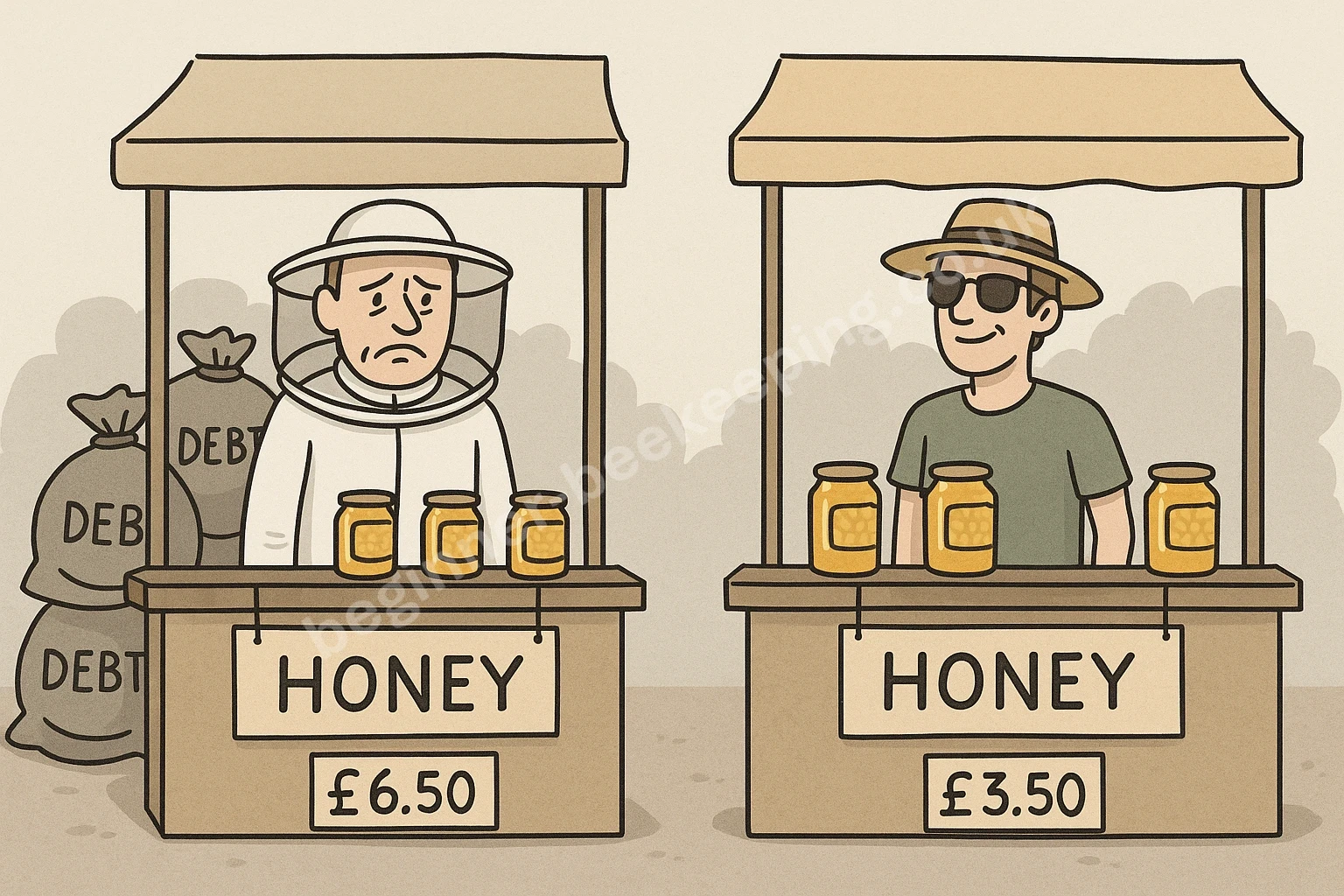A Look at How Hobbyists, Charities, and Industry Dynamics Shape the Honey Market
The Uneasy Buzz in Beekeeping
Across the UK, a quiet conversation is gaining momentum among beekeepers. It’s not about colony losses or climate this time – it’s about money, markets, and fairness.
Some commercial producers have started asking whether beekeeping associations and hobbyist groups, often registered as charities, might be unintentionally undercutting those who depend on beekeeping for their livelihood.
As one beekeeper put it in a recent discussion, associations often benefit from bulk buying power and trade discounts that small businesses can’t access. While that helps members save money, it also blurs the line between community support and commercial activity.
Another beekeeper noted that limited storage space and smaller order sizes can make it impossible to compete with association-level purchasing. “It’s not anyone’s fault,” they explained, “but it does make you realise how uneven the system can feel.”
These aren’t accusations – they’re observations from a community trying to understand its own changing dynamics.
When Support Turns into Supply
Local beekeeping associations have long played an essential role: training new keepers, promoting bee welfare, and supporting education. But over time, some have evolved into semi-commercial entities, reselling jars, tools, and supplies to members.
From one perspective, it’s a natural progression – a cooperative model that keeps costs low for everyone. From another, it risks putting small professional producers at a disadvantage, especially when the same networks that support learning also become suppliers and, indirectly, competitors.
And then there’s the marketplace itself. Some hobbyists now sell honey at local fairs and markets, sometimes without the same food safety registration or trading standards oversight that professionals must comply with.
Is it a harmless sideline that keeps the craft alive – or a quiet disruption of local pricing structures?
The Price of Passion
At the heart of the issue lies a simple truth: the economics of beekeeping aren’t equal for everyone.
For a hobbyist, selling honey might be a way to offset costs – a few pounds here or there to fund their next batch of jars. For a commercial beekeeper, those same jars carry layers of cost: food hygiene certification, inspection fees, insurance, transport, and marketing.
The consumer, standing at a market stall, rarely sees that difference. A £3.50 jar from a hobbyist sits next to a £6.50 jar from a professional – and without context, it’s easy to assume the cheaper one is simply better value.
That perception, however innocent, puts real pressure on the commercial end of the market.
So perhaps the question isn’t “Who’s right?” but rather:
- Should all honey sold to the public meet the same standards, regardless of scale?
- Should associations that trade goods have clearer guidelines?
- Or is this simply a case of balancing passion with practicality in a changing industry?
Collaboration or Competition?
Maybe the answer lies not in drawing lines but in building bridges.
The divide between commercial and hobbyist beekeepers doesn’t have to be adversarial. Transparency, shared understanding, and open dialogue could go a long way.
Could associations and professionals collaborate on bulk orders to level the playing field? Could hobbyists help educate consumers about what goes into professional honey production – from compliance to craftsmanship?
The beekeeping community has always thrived on shared knowledge and cooperation. Perhaps this moment of tension is really an opportunity to reimagine what fair collaboration looks like.
Beyond the Hive
As one experienced beekeeper recently reflected, “It’s not about blaming anyone – it’s about figuring out what fairness looks like as beekeeping keeps evolving.”
That sentiment may hold the key.
Maybe it’s time for a clearer distinction. Or maybe, it’s time for a clearer conversation.
